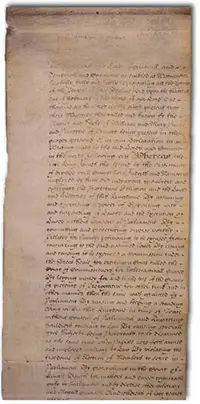The Revolutions of 1848
Part 1: Background
The Revolutions of 1848 encompassed political and social changes across the fabric of Europe, in many countries, and in many ways. Historians group them together, but they were very much separate movements, each with its own set of circumstances, events, and results. 
One of the prime causes of the unrest was a severe famine that struck the breadth of the Continent in 1846. The lack of food was perhaps most pronounced in Ireland, but other European locales suffered through a large-scale lack of sustenance as well. A general lack of consumer buying power resulted in drops in revenue across the general economic sector; at the same time, the lack of money to buy things led to drops in production and consequent layoffs and unemployment, leading to social unrest. This continued for several months, peaking in large-scale political action in 1848 in dozens of places in multiple countries across Europe. 
Also at this time, more and more countries were adopting more representative rule. The United Kingdom had been heading this way for some time, ostensibly beginning when William and Mary agreed to the Bill of Rights as part of the Glorious Revolution that brought them to power in 1688. Subsequent monarchs agreed to more and more power's being in the hands of Parliament, and the U.K. largely avoided the large-scale, sometimes violent political unrest that consumed other European countries in the late 1840s. (One brief exception was a violent confrontation between U.K. troops and members of the Chartist movement as they tried for a third time to present a petition of electoral reform demands to Parliament in 1848.) The U.K. did, however, experience great tensions between the classes. This kind of discontent was much more widespread in other European countries, mainly in the ones still ruled in the mid-19th Century by absolute monarchs. Another factor that led to large-scale uprisings in European countries at this time was the fundamental shift in the nature of work precipitated by the Industrial Revolution. The use of machines, factories, and new technologies had begun on a large scale in the U.K. but had quickly spread to other countries. The ability of industries to provide cheaper alternatives to products that had for generations been made by hand provided more opportunities for purchase across the economic spectrum but, at the same time, resulted in a drop in production of "handmade" products, which, when compared to factory production, were proving more expensive and time-consuming to produce. Many people were able to switch their employment destination, but many more were not. Increased unemployment led to widespread food shortages and discontent. The lack of income also led to an overall drop in economic activity by banks, some of which became insolvent. Driving much of this economic and social change was the power of ideas. The more people in Europe heard of changes in other countries, like representative government and freedom of the press and the ability to organize politically in order to protect certain basic rights, the more these people decided that they wanted such things for themselves. At the same time, the idea of nationalism drove people living in what today would be a multinational entity like the Habsburg Empire to want to have their own country, populated by the people who shared their own language, culture, and perhaps even religion and not ruled by someone who didn't fit that kind of nationalist mold. Next page > France and Germany > Page 1, 2, 3 |
|
Social Studies for Kids
copyright 2002–2024
David White




